Cost Posture
Introduction
Having clear visibility and a solid understanding of the cloud spend across all your cloud accounts is crucial. By using cost analysis, you can better plan for optimization and cost savings. Cost Posture in the platform provides visibility into overall cloud costs across all your cloud accounts.
Cost Posture Summary
Navigate using the left side menu in the platform to Cost > Posture in order to access the summary page view.

The Cost Governance summary section shows the consolidated spend by cloud and overall spend of each cloud provider.
Note that Azure Subscriptions now include reservation charges. With the help of our platform, reservation charges can be captured for individually onboarded Subscriptions, which typically doesn’t appear in usage APIs. This approach provides visibility into cloud costs, enabling more accurate reporting and resource management.
The grid view displayed below the overall summary shows details based on the page view selected.
The Tenant View shows the following details:
- Tenant Names
- Total Cost
- Current Month’s Forecast
- AWS Month Till Date Cost (MTD)
- Azure Month Till Date Cost (MTD)
- GCP Month Till Date Cost (MTD)
- OCI Month Till Date Cost (MTD)
You can click on the view icon to drill down into the details and view costs per day. You can also change the filter to view the costs for the current month or last three months.
- You can change the page view by using the small arrow on the top left side of the screen.
- Use the Advanced Filter option to select only the relevant options that should appear on the screen for the selected tenant view.
- You can also view the total cost usage chart, list of associated cloud accounts, list of associated product categories, and PRODUCT CATEGORY USAGE DETAILS grid at the end of the page.
- You can view the cost trends in any one of the available chart formats. Click the format in which you want to view the details.
- You can click the three horizontal lines, and then select the option View in full screen to enlarge the cost trend view. Click Exit from full screen to get back to the normal view.
- You can also select to download the cost trend in PNG, CSV, or PDF format.
- You can click the Reports list in the top-right corner of the screen and select the relevant cost report to view detailed cost information.
The Account View shows the following details:
- Cloud Provider
- Cloud Account Name
- Account Type
- Cloud Provider Unique ID
- Current Month Till Date Cost
- Current Month’s Forecast
- Total Cost
You can click on the view icon to drill down into the details. You can also change the filter to view the costs for the current month or for the last three months.
- You can change the page view by using the small arrow on the top left side of the screen.
- Use the Advanced Filter option to select only the relevant options that should appear on the screen for the selected tenant view.
- You can view the cost trends in any one of the available chart formats. Click the format in which you want to view the details.
- You can click the three horizontal lines, and then select the option View in full screen to enlarge the cost trend view. Click Exit from full screen to get back to the normal view.
- You can select the relevant option to download the cost trend in PNG/CSV/PDF format.
- You can click the Reports list in the top-right corner of the screen and select the relevant cost report to view detailed cost information.
- The SUMMARY USAGE DETAILS grid can be viewed at the bottom of the page.
Note:
To ensure that the platform is able to define and fetch the budgets available in your native cloud services, it’s required for the platform to have access to those cloud services. That means this feature may not be available for accounts onboarded with Read-Only access enabled.
Refer to this link for AWS Budgets pricing: https://aws.amazon.com/aws-cost-management/pricing/
Additional actions that can be taken from the Posture page include:
- Click the Markup & Discounts checkbox to view cloud accounts that have markup and discounts applied.
- Click the Billing Frequency checkbox to view accounts that have billing frequency applied.
- Click the Period list to select the month(s) for which you need to view the cloud details.
- Click the Currency list and select a currency in which you want to view the cost information.
- Use the Search box to search for any cloud account.
- Click the drop-down arrow on the top-left side of the screen to select the relevant page view.
- Click the dotted square tile on top-right corner of the screen to select either Budget Configuration or Markup & Discounts. The Budget Configuration option directs you to the Budget Management page that contains all budget-related information. The Markup & Discounts option directs you to the page with a list of markup and discount rules.
- You can see three icons above the grid view. Select the required option whenever needed:
- Filter: When you click this icon, a dialog box appears where you can select the relevant option to narrow down your view.
- Edit column: When you click this option, a dialog box appears where you can select the required columns that need to be displayed.
- Download data as CSV: When you click this option, you can download cost details in CSV format.
Billing Frequency
When the Billing Frequency checkbox option is selected, it will show the cost incurred against each cloud account based on the actual billing start date and end date.
For example, If the billing start date and the end date are configured as June 7th to July 7th with the cloud provider, the cost displayed will be the cost incurred for those specific dates.
When this option is unchecked, the cost value displayed will be the cost incurred for the calendar month. For instance, from the 1st day of the calendar month to the current date of the month, or the 1st day of the previous month to the end date of the previous month.
Note:
Any discrepancies in costs shown in the platform and the AWS portal might be due to refunds and/or credits not being displayed by AWS.
Note:
To know about differences in cost data between Budget and Posture pages, refer here.
Page Views
A Page View is the way data is displayed for a user when they access a page in the platform. Based on the type of view the user has selected, they can view the details on the respective screen.
A user can click the arrow on the top left of the Cost Governance screen (next to Account View) to see the list of available System Views and Custom Views.
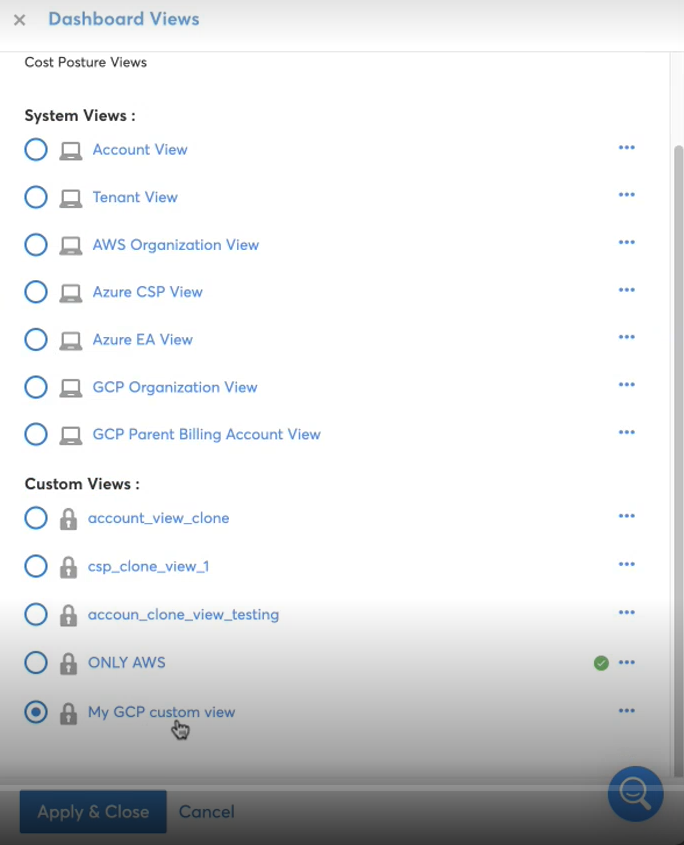
System Views
The System Views are page views provided in the platform. These views are displayed in the following order:
- Account View
- Tenant View
- AWS Organization View
- Azure CSP View
- Azure EA View
- GCP Organization View
- GCP Parent Billing Account View
Account View is the default view for every user. A System View cannot be changed or edited. These are standard views and are identified with a desktop symbol.
To access a particular System View, users can select Cost > Posture > click the arrow on top-left side of the screen (next to Account View) > select the required System View > click Apply & Close. The selected view is displayed.
Custom Views
Custom Views are displayed below the System Views and are derived from the System Views. The Custom Views are identified with a lock symbol. A Custom View is a user-defined view.
Users can apply all the required filters to view the page as per their specific need. For example, a user can select AWS under the Cloud filter to view only AWS accounts on their page and save the view as a custom view.
Custom Views can be created in two ways:
- Users can apply the required filters and then save that page view.
- Users can save a copy of an existing view, apply the required filters, and then save that page view.
The filters applied in the Custom Views can be modified anytime. A Custom View that is created by a particular user cannot be accessed by another user. If a user wants to select a different Custom View they have created, then they can select Cost > Posture > click arrow on top-left of the screen (next to Account View) > select the required Custom View > click Apply & Close to access that view.
Follow these steps to create a Custom View:
- Navigate to Cost > Posture.
- Click the arrow on top-left side of the screen.
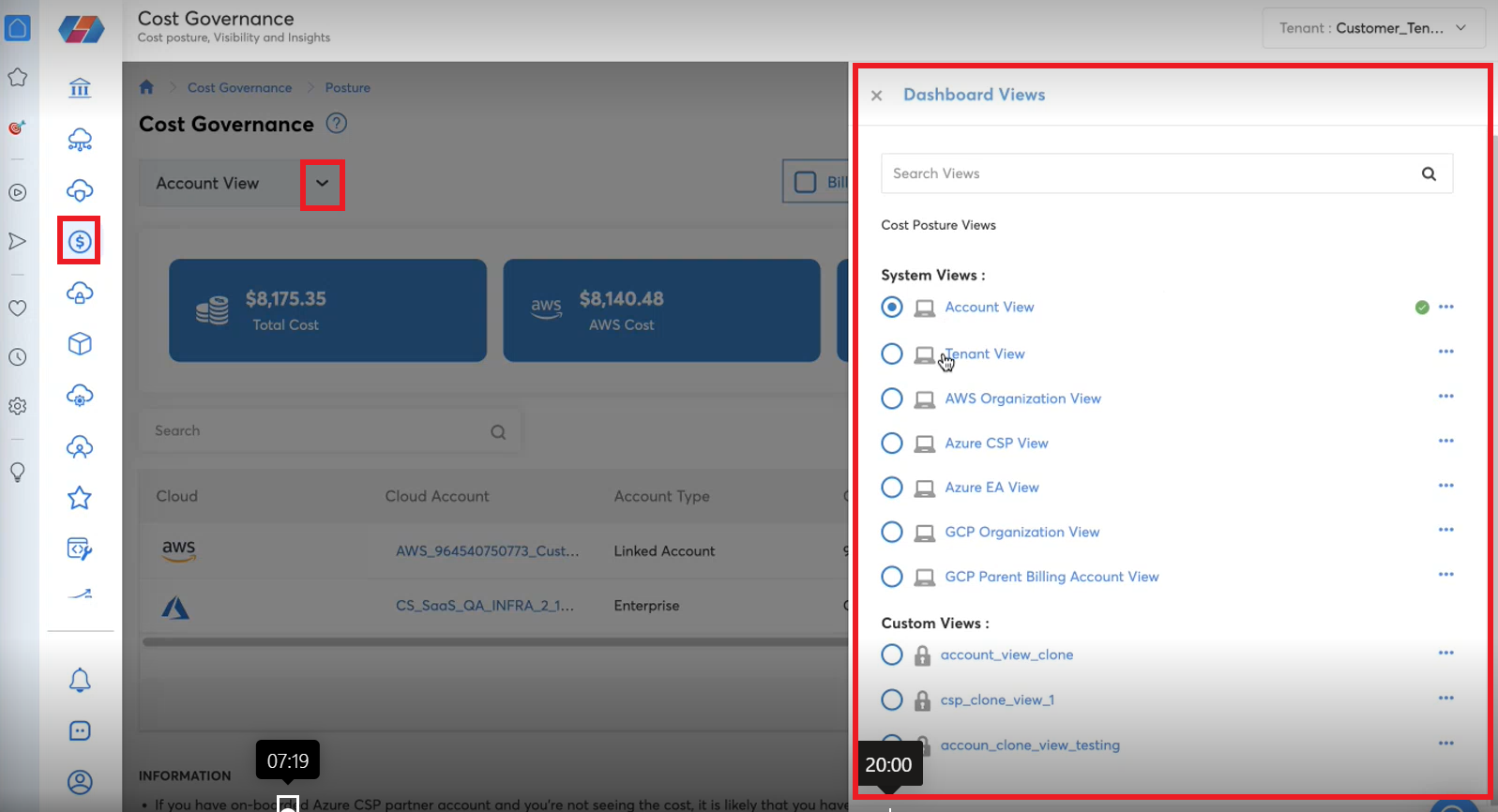
- To filter the page and view the screen with specific details, apply the required filter or select the required options to narrow down the search.
For example, click to select AWS to view cost details for AWS accounts only. - Click Save button that is enabled on the top-left side of the screen.
- In the Create New View box, type the name of the Custom View.
- Select Set as Default View to set this as the default view.
- Click Save & Close.
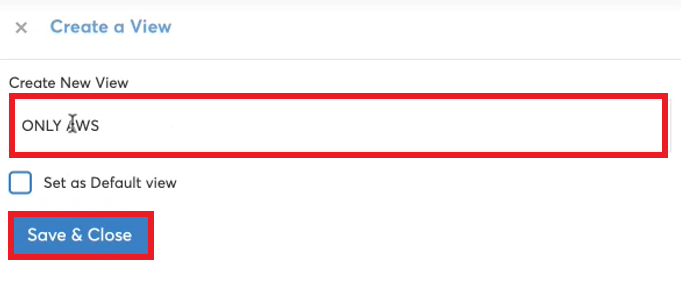
This Custom View is now saved. When users navigate to Cost > Posture later again, their Custom View appears by default. All the filters applied in that particular Custom View remain unchanged.
Follow the steps given below to copy a view and mark it as Custom View:
- Navigate to Cost > Posture.
- Click the arrow on the top-left side of the screen.
- Click the three dots symbol.
- Click Save As.
The Create a View dialog box displays.
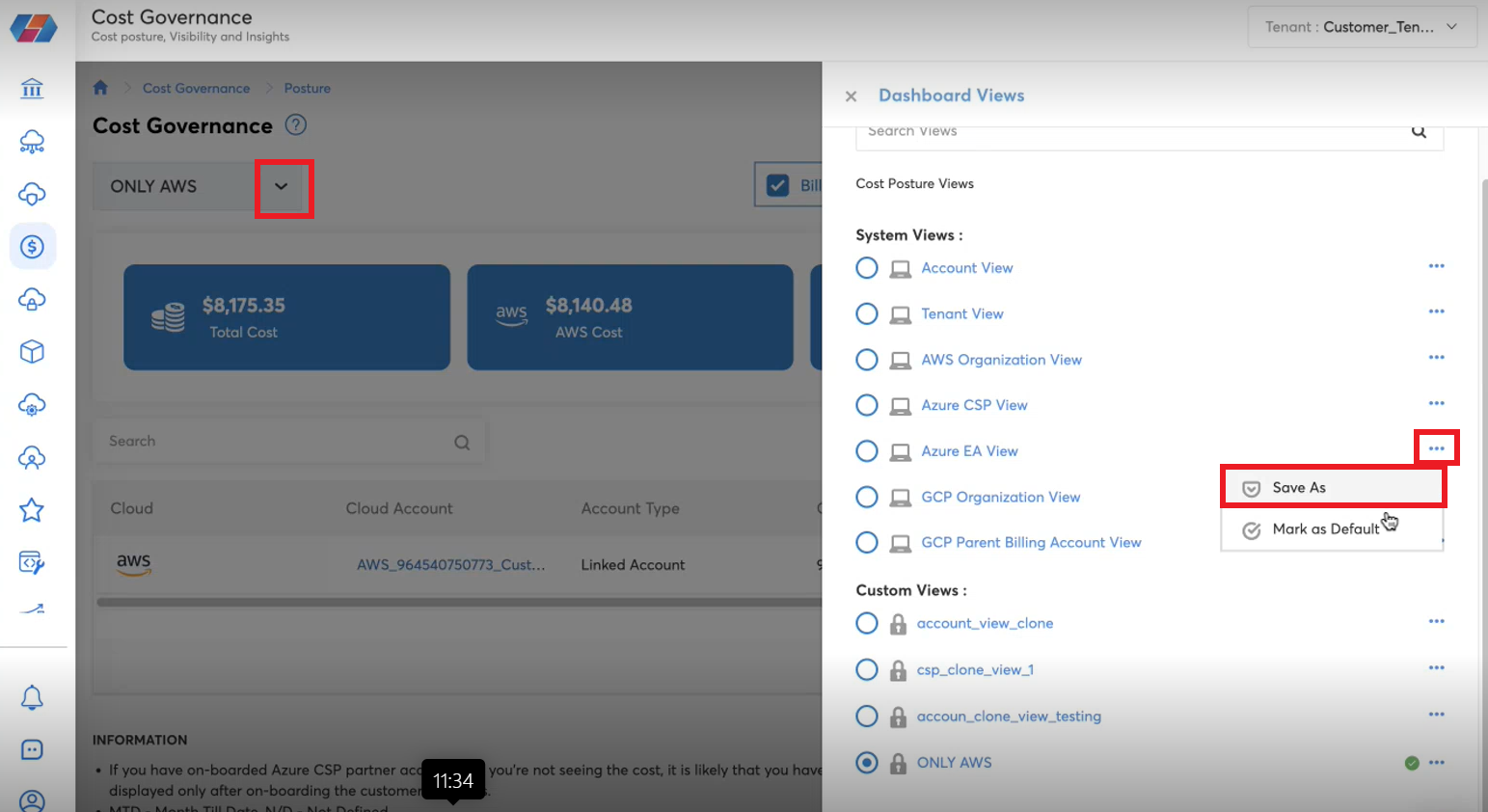
- In the Create a View dialog box, in the Create New View box, type the name of the new view.
- Click Set as Default View to set the selected view as default view.
- Click Save & Close.
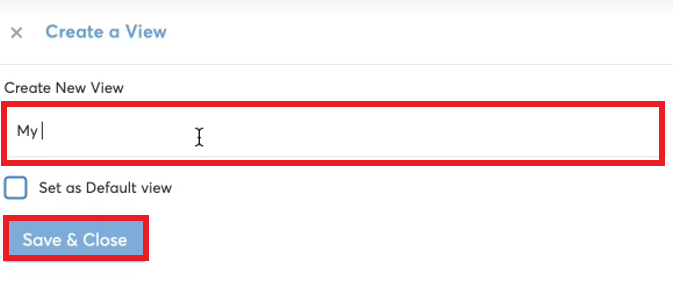
Add Default View
A user can mark a page view as a default view.
When a user accesses the platform, they can see the default view set by them. The advantage of using a default view is that the user does not have to select that specific view every time they access the application.
Follow these steps to mark a view as default view:
- Navigate to Cost > Posture.
- Click the arrow on the top-left of the screen.
- Click the three dots.
- Click Mark as Default.
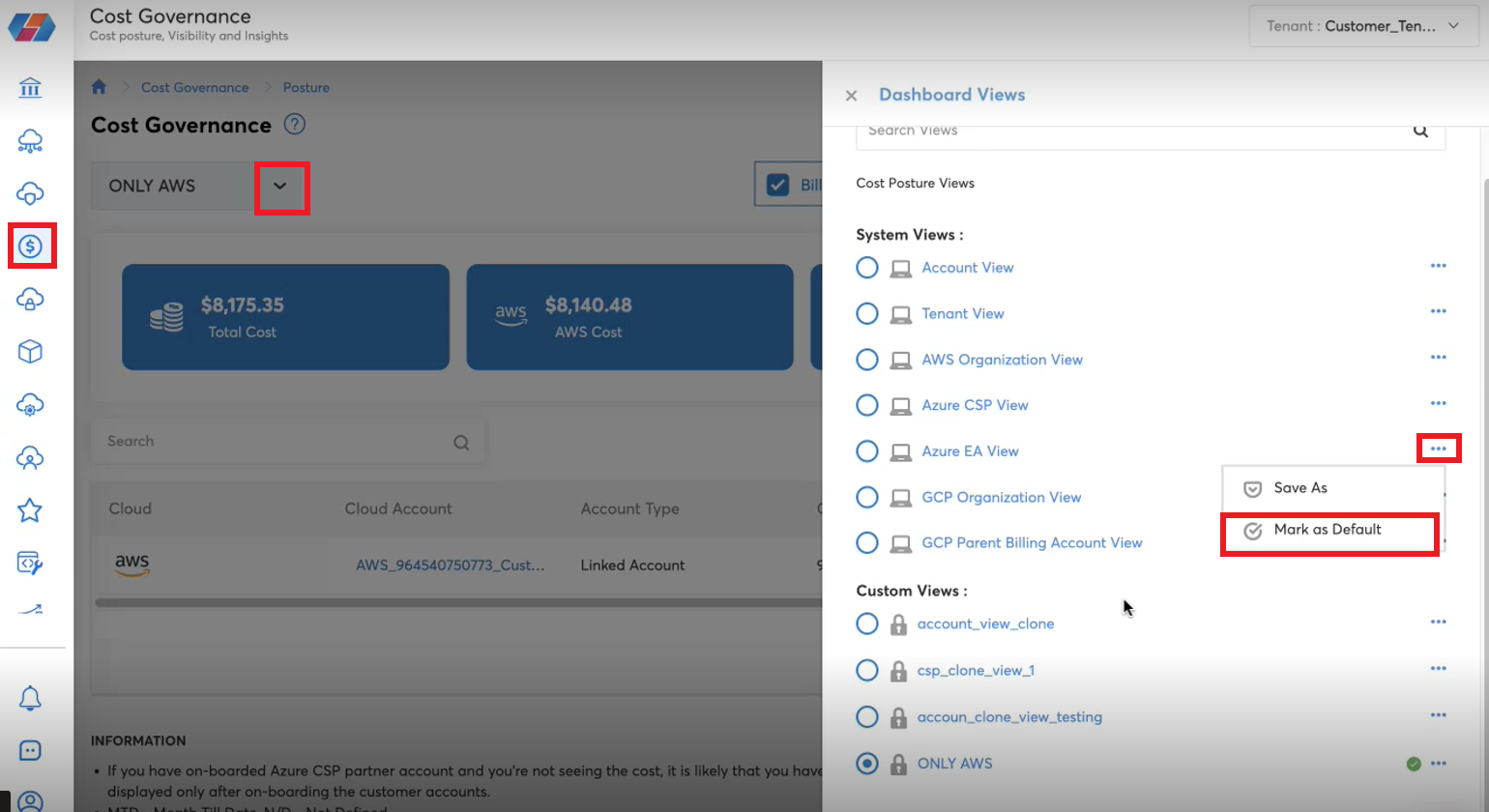
After a Custom View is marked as default, a green tick appears.
Note:
Users can click Delete to remove a Custom View.
Updated 6 months ago